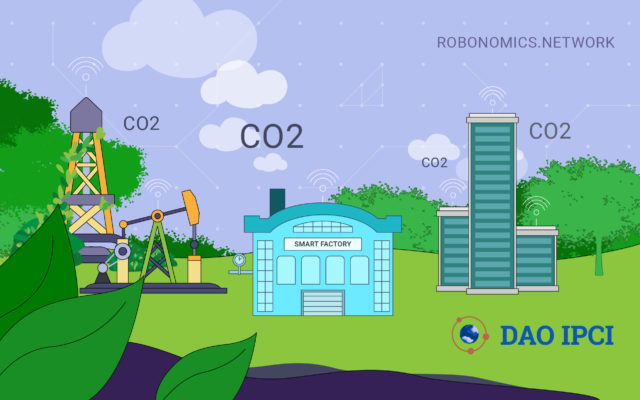
Regardless of futuristic forecasts, blockchain technology doesn’t seem to have that many real-world applications, especially at a large global scale. The green capital market, however, tends to stand out, as blockchain has already been tried and tested. It opens up ecological markets for enterprises by allowing emissions trading.
Emission Trading and What it Entails
Emission trading is a phenomenon which was initially brought forward by the Kyoto Protocol in 2005. It came into effect in order to reduce the harmful effects of CO2 emissions into the atmosphere, the issuers of which are mainly power plants using fossil fuels.
Emission quotas and carbon credits (these are the accountable emission reductions) are measured by carbon units, each one of which is equivalent to one ton of carbon dioxide which is emitted into the atmosphere. Now, since the quota emissions are limited and also subjected to a fine, carbon credits are respectively in demand and, hence, available for purchase on the exchange. This is a practice called cap and trade. There are other market models as well – such as credit-based, tax and trade, or transaction-based.
The point of this trading is to offset the damage done to the environment in the most cost-efficient way, while, at the same time, stimulating companies to reduce harmful emissions on their own and attract further investors.
Of course, as it is almost always the case, all of this sounds a lot better than it is in practice. The market is plotted with a range of issues such as disintegration, unpredictability, fraud, lack of transparency, high transaction costs, over-centralization, over-regulation, and so forth – the list goes on.
Enters Blockchain
The world’s very first carbon units transaction through blockchain happened back in the spring of 2017. They were carried out in the DAO IPCI blockchain ecosystem.
The system is built on the Robonomics digital platform introduced by Airalab. It mixes together verification, registration, as well as environmental commodities market functions, allowing users to properly allocate and to manage environmental assets and liabilities through the blockchain.
The concept is based on an effective P2P (peer-to-peer) market interaction of several parties. These include those who are responsible for the damage to the environment, those who suffer from them, and those who attempt to provide mitigation tools.
The technology guarantees both reliability and transparency when it comes to carbon credits verification producers and transactions. It also sets forth possibility of global interactions between otherwise fragmented carbon pricing initiatives with carbon market institutions. It eliminates unnecessary intermediaries and carbon registries, making the entire operation much more efficient.
The pilot transaction was made between Aera Group in France and the Russian Carbon Fund under the Blockchain Climate Standard in the DAO IPCI blockchain. The used credits had Mauritius origin.
As of right now, the target audience of the project contains 53 jurisdictions, a range of voluntary carbon market solutions, and the international aviation industry. According to DAO IPCI, the carbon market is much likely to reach $10 trillion in med-term perspective.
It’s worth noting that the above-mentioned use case exhausts only one of the potential implementations of the Robonomics Network. It opens up the green capital market and brings forward investment opportunities for countries, as well as for the so-called small buildings which improve efficiency and sustainability.
A 40-storey office building, which consumes a lot of energy for heating, air conditioning and maintaining its systems, can also calculate its carbon footprint and acquire units through the platform. – Says Sergey Lonshakov, Airalab visionary leader, Robot economics architect.
After managing to attract more than $1 million in investments through the first round of ICO in 2017, his team is currently preparing for the next phase of Robonomics token distribution and brings forward a bounty program for miners.
In short, blockchain-based solutions provide the following benefits and options:
- It creates incentives for enterprises to further improve and modernize their production and to become even more energy efficient.
- It registers climate commitments as well as mitigation tools.
- It creates and develops an environmental assets and liabilities market, which also includes the green bonds market.
What do you think of blockchain in the field of emissions trading? Don’t hesitate to let us know in the comments below!
The post Countries and Enterprises Can Access Green Capital Market Thanks to Blockchain Technology appeared first on Bitcoinist.com.

Bitcoinist.com is author of this content, TheBitcoinNews.com is is not responsible for the content of external sites.
Our Social Networks: Facebook Instagram Pinterest Reddit Telegram Twitter Youtube











